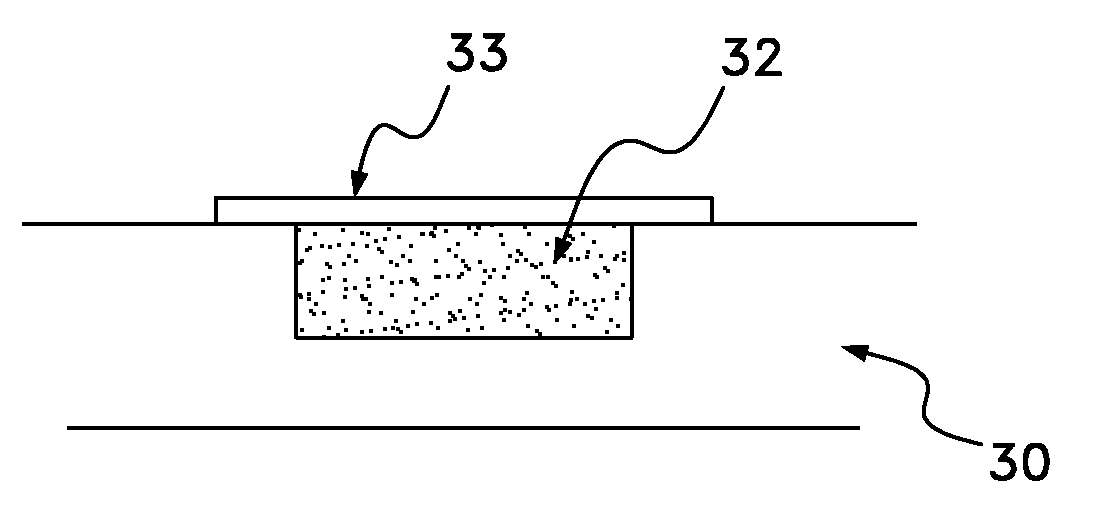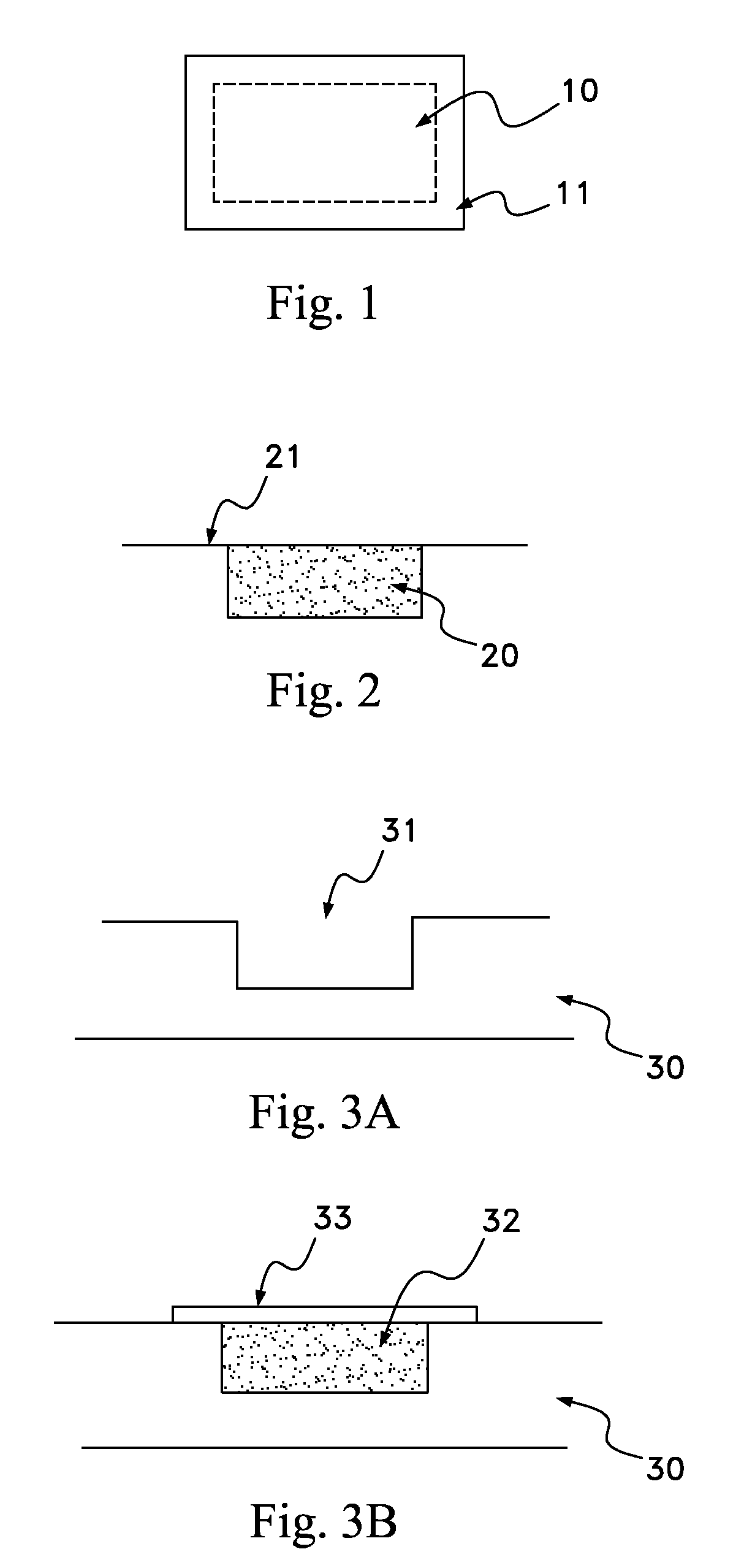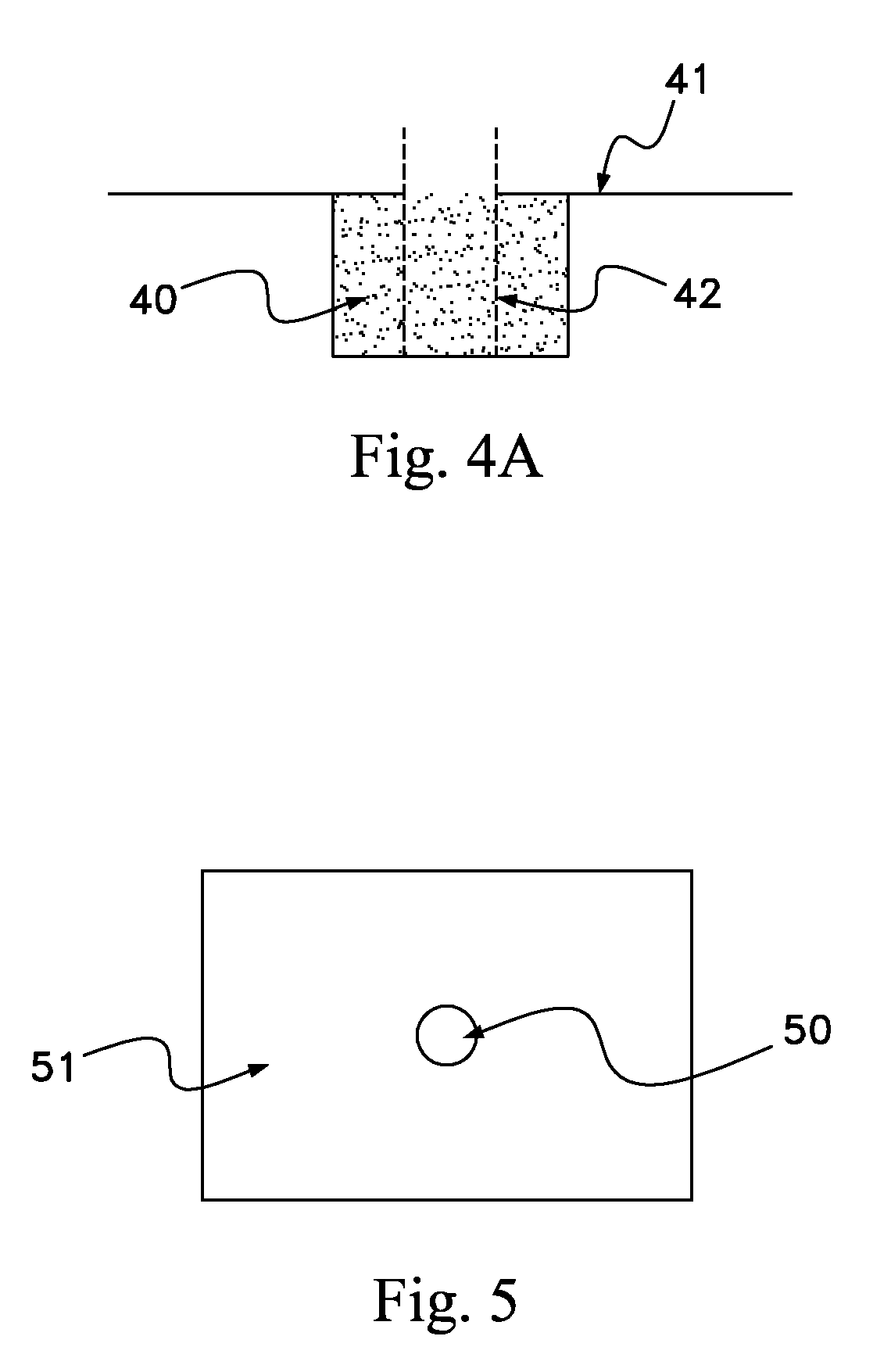Biodegradable osteogenic porous biomedical implant with impermeable membrane
a biomedical implant and biodegradable technology, applied in the field of implant depot, can solve the problems of weakening the graft, interfering with new bone growth, etc., and achieve the effect of eliminating subsequent surgeries and improving sealability
- Summary
- Abstract
- Description
- Claims
- Application Information
AI Technical Summary
Benefits of technology
Problems solved by technology
Method used
Image
Examples
Embodiment Construction
[0023]The present invention includes a scaffold or carrier matrix which comprises degradable polymer, preferably collagen, and ceramic materials. The carrier matrix has a scaffold structure and is incorporated with growth factors that stimulate the generation of new bone growth. The ceramic materials comprise calcium compounds. For example, calcium compounds may comprise calcium carbonate, calcium sulfate, calcium lactobionate, calcium fluorite, calcium fluorophosphates, calcium chlorophosphate, calcium chloride, calcium lactate, hydroxyapatite, ceramics, calcium oxide, calcium monophosphate, calcium diphosphate, tricalcium phosphate, calcium silicate, calcium metasilicate, calcium silicide, calcium acetate, and biphasic calcium phosphate.
[0024]Biphasic calcium phosphate is the preferred ceramic, with a desirable biphasic calcium phosphate having a tricalcium phosphate:hydroxyapatite weight ratio from about 50:50 to about 95:5. More preferable about 70:30 to about 95:5, even more pr...
PUM
| Property | Measurement | Unit |
|---|---|---|
| diameter | aaaaa | aaaaa |
| diameter | aaaaa | aaaaa |
| porosity | aaaaa | aaaaa |
Abstract
Description
Claims
Application Information
 Login to View More
Login to View More - R&D
- Intellectual Property
- Life Sciences
- Materials
- Tech Scout
- Unparalleled Data Quality
- Higher Quality Content
- 60% Fewer Hallucinations
Browse by: Latest US Patents, China's latest patents, Technical Efficacy Thesaurus, Application Domain, Technology Topic, Popular Technical Reports.
© 2025 PatSnap. All rights reserved.Legal|Privacy policy|Modern Slavery Act Transparency Statement|Sitemap|About US| Contact US: help@patsnap.com



